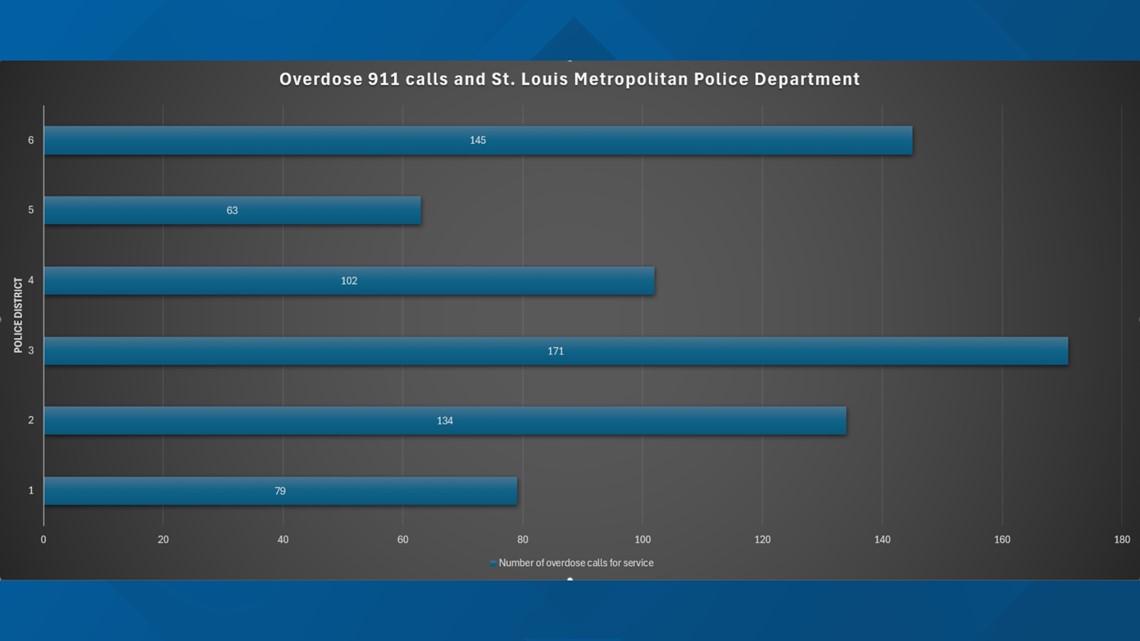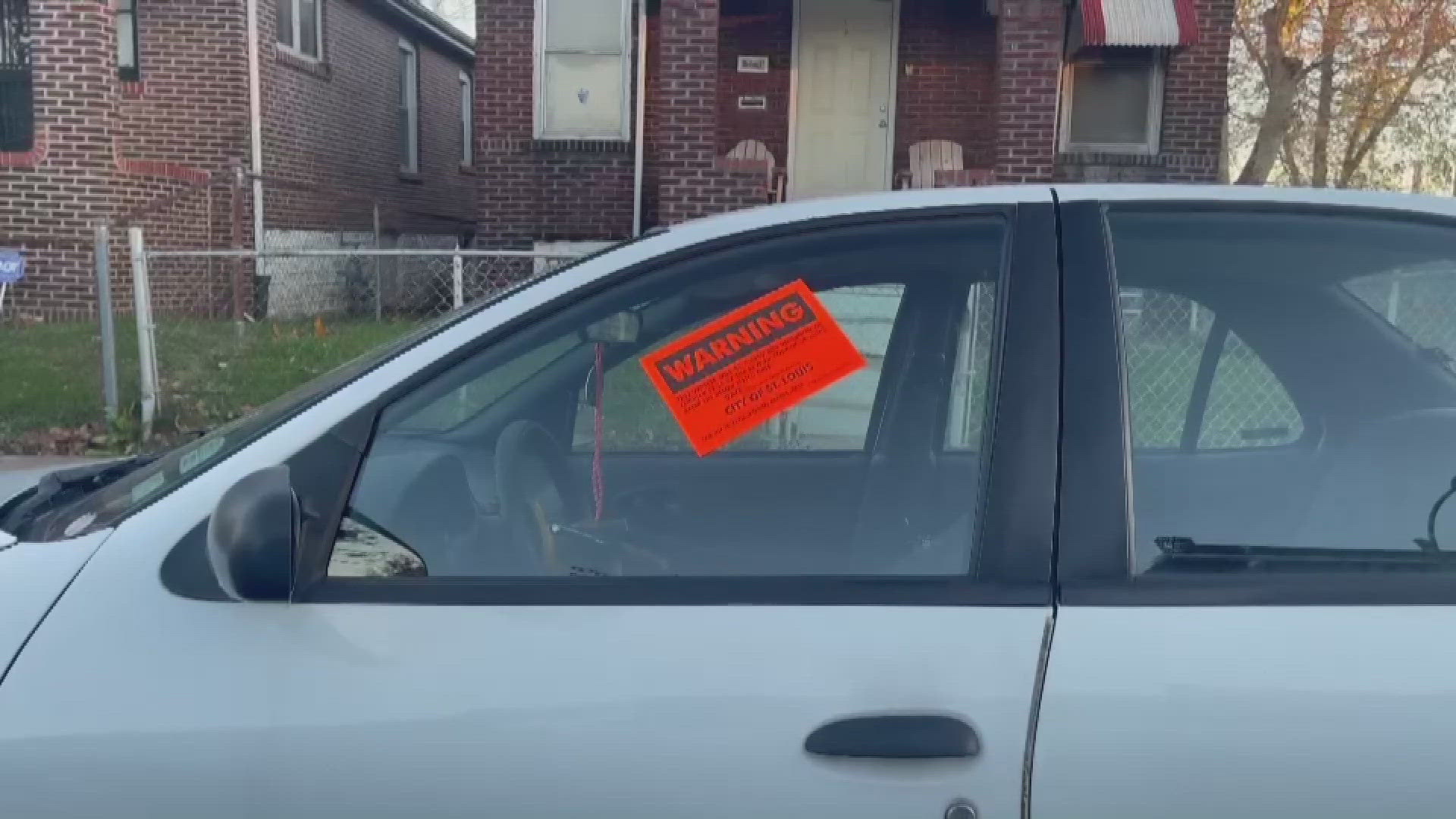ST. LOUIS — The drug supply is changing faster than St. Louis and St. Louis County can keep up with, according to experts and Missouri state officials. Experts say the majority of people who are dying of drug-involved deaths have other major social determinants of health barriers affecting their ability to stop.
According to reports, the issue was front and center in fall 2023 talks between President Joe Biden's administration and Chinese President Xi Jinping aimed to reduce the amount of fentanyl coming from China into the U.S. Biden also has spoken to Mexican President Andrés Manuel López Obrador who pledged to work on curbing illicit fentanyl trafficking into the U.S. and account for the increase in south American migrants seeking asylum crossing illegally in the country.
The epidemic has killed thousands of Americans each year spanning back to 2016.
Some politicians say the rate of overdoses and overdose deaths has been caused by illegal drug trafficking by Mexican drug cartels and Chinese sources. Drug suppliers could smuggle fentanyl across the U.S.-Mexico border or U.S.-Canada border and other legal ports of entry. The fentanyl ends up poisoning heroin, cocaine and opiate pills on the street.
Fentanyl poisoning has reached St. Louis and St. Louis County streets, according to experts and state officials. Missouri State Highway Patrol saw 12,500 grams of fentanyl, which Missouri Attorney General Andrew Bailey said was enough to kill every Missourian.
This staggering amount of seized fentanyl in Missouri was disclosed before Congress by Bailey. He recently testified during the first impeachment inquiry hearing of U.S. Homeland Security Secretary Alejandro Mayorkas. Mayorkas has faced criticism from Republicans for an "invasion" of illegal migrants seeking asylum, and drug and human trafficking. Senators voted to dismiss both articles of impeachment and end the trial, with Democrats arguing that the articles were unconstitutional.
St. Louis County police and overdose calls for service and fentanyl encounters
The department said the county has also experienced a high level of fentanyl powder and pills being distributed by drug trafficking organizations.
A spokesperson confirmed that the supply of fentanyl being illegally distributed within the county has ties to Mexico and China.
The department said the Bureau of Drug Enforcement is constantly working on investigations involving the illegal distribution of controlled substances including fentanyl.
“The patrol officer would normally come into contact with the possession of controlled substance,” a spokesperson said. “We routinely see ‘mimic tablets,’ (mimic oxycodone tablets) containing fentanyl; however, we do not routinely see street drugs laced with fentanyl.”
Between January 2021 and September 2023, fentanyl was found in more than 1,000 drug seizures, including 2,661 samples, and opioids were found in more than 600 drug seizures, including 787 samples, according to county police.
Within that same period of about two years and nine months, the department said fentanyl averaged close to 25% of all seized drugs.
The County Police Crime Lab will only accept seized drug submissions at the request of either the Prosecuting Attorney’s Office or the U.S. Attorney’s Office.
St. Louis Metropolitan Police Department and overdose cases in the city
The St. Louis Metropolitan Police Department provided the rate of calls for service in the city where a reported drug overdose happened for over 10 months in 2023. According to the department, they received more than 11,000 calls for service or 911 calls regarding a drug overdose in the city within the last eight years. A call for service for an overdose doesn’t mean the victim died, rather emergency services were called in to handle the incident. St. Louis paramedics also helped respond to several of those calls.
SLMPD provided 5 On Your Side with all calls coded as "OD" for overdose since August 2016. There is “no way to distinguish the type of overdose or what substance it relates to,” a spokesperson said.
We highlighted the number of calls for service and the responding police district where each reported drug overdose occurred to provide more context to the fentanyl-opiate issue facing the city.
5 On Your Side used Missouri's Sunshine Law to find the number of calls for service the department received regarding an overdose case in the city.
According to data provided by the department, between Jan. 1, 2023, and Nov. 4, 2023, there were nearly 700 calls for service to the St. Louis Metropolitan Police Department regarding a reported overdose. That’s roughly 13 calls each week.


District 3 received the highest number of 911 calls regarding a reported overdose during those 10 months with more than 170 calls. The department's sixth district received nearly 150 calls while its second district received nearly 140 calls.
The department's third district is located in south-central St. Louis. This area represented the largest number of overdose calls for service that officers and EMS personnel responded to. That means neighborhoods such as Dutchtown, Mount Pleasant, Soulard, McKinley Heights and more have been severely impacted by drugs and drug overdose rates that St. Louis police have had to respond to last year.
Moreover, the sixth district is located in north St. Louis where they experienced the second highest rate of 911 calls regarding an overdose. Neighborhoods in District 6 include Baden, Walnut Park East and West, Mark Twain and Hyde Park.
The third highest rate of calls originated from the second police district which is located in the southwest of the City of St. Louis.
Several areas of overdoses appear to happen under Interstate viaducts or street intersections and community parks, businesses such as Walgreens or QuikTrip gas station parking lots, for example, and even adjacent to city hall itself.
5 On Your Side reached out to the St. Louis Metropolitan Police Department in December 2023 regarding the level of opiate pills and fentanyl being distributed onto city streets, among other inquiries, and it has not responded at this time.
Solutions to the drug and fentanyl epidemic
Rachel Winograd, associate professor for the Department of Psychological Services at the University of Missouri-St. Louis said she is fully confident that the majority of people who are dying of drug-involved deaths have other major social determinants of health barriers that are not only contributing to their motivation to use drugs in the first place but are making it next to impossible for them to stop using drugs.
She said that if the country continues to have policies and practices that match the landscape five or 10 years ago, we're going to continue to be outpaced by the drug epidemic. Solutions that would have worked a decade ago but are no longer sufficient.
She said she believed the St. Louis area’s next step should include more significant investments in housing, eliminating poverty and providing safety and security to individuals who live here. This will help those using drugs in some of our most disinvested neighborhoods in our region.
She said other efforts should include establishing ecosystems locally in every community so people can access all the types of help they might need as easily as possible.
“Right now, we make it easier to get fentanyl than we do to get affordable housing. We make it easier to get fentanyl than we do to get buprenorphine or methadone. The only two medications we have shown to reduce overdose deaths. Do you see what I'm saying?” she asked.
Winograd said society makes it so hard for people to stop or reduce their drug use and we set them up for failure by sending them back into communities where they have no environmental support and their basic needs are met.
She said the first step is to implement universal health care and a living wage.
“We have to go right to the drawing board for this entire country,” she said.
Resources for those who want to seek treatment and recovery
ARCA is one of the St. Louis area’s largest contracted providers of Medicaid-assisted treatment through the Missouri Department of Health. It assists between 13-15 new patients daily in addition to more than 6,000 active patients across the state. It assists in substance use withdrawal, treatment and recovery.
It offers free beds and detox services for all types of drugs including alcohol. The patient does not need to make an appointment or have insurance. One of its three locations can assist with Medicaid applications to access cost-effective healthcare coverage. All medications are covered.
St. Louis Way, which is Jubilee Connections, is a co-located site with the Jubilee Community Church at 4231 N. Grand Boulevard. You can reach them at 314-832-9033 or their website here.
ARCA's Downtown St. Louis main clinic is located at 1430 Olive Street, the state's only outpatient addiction treatment clinic. Help can be reached at 314-645-6840 or their website here.
ARCA’s brand-new clinic is located at 10208 West Florissant Avenue, which is Dellwood. Help can be reached at 314-645-6840 or their website here.
Harris House Treatment and Recovery Center is located at 8315 South Broadway in south St. Louis. You can reach them at 314-631-4299. The center is open 24 hours. Visit their website here.
St. Louis Metro Treatment Center supports several areas including Maryland Heights, Florissant, Jennings, Ferguson and more. The center is located at 9733 St. Charles Rock Road. You can reach them at 314-423-7030 or visit their website here.



